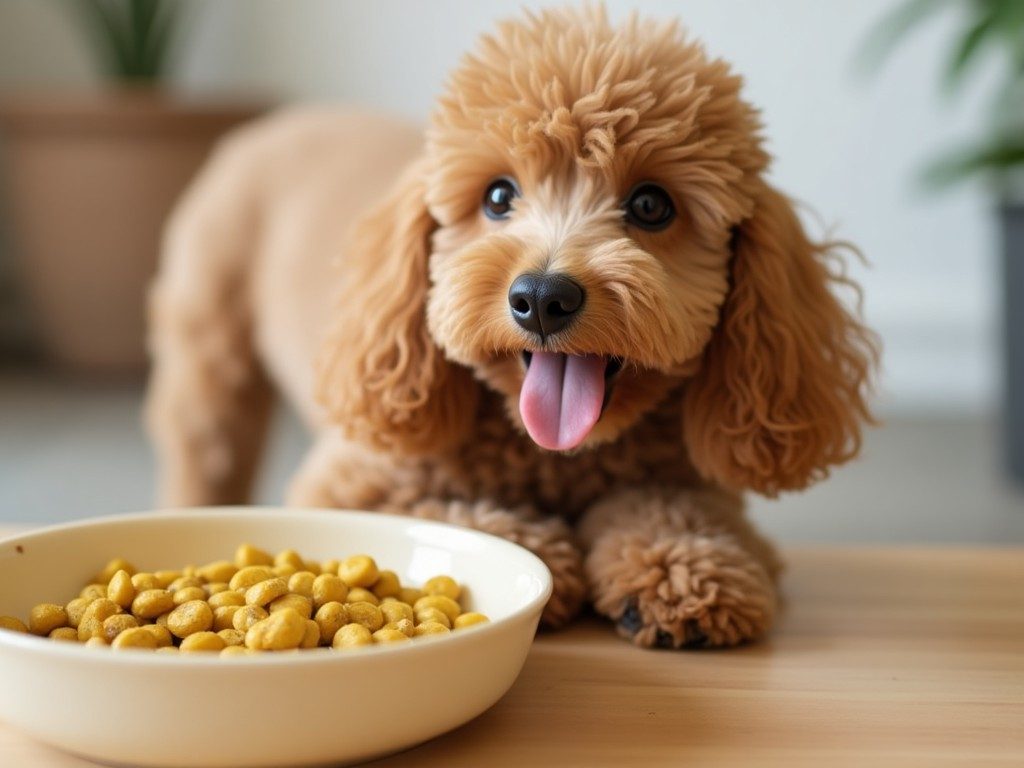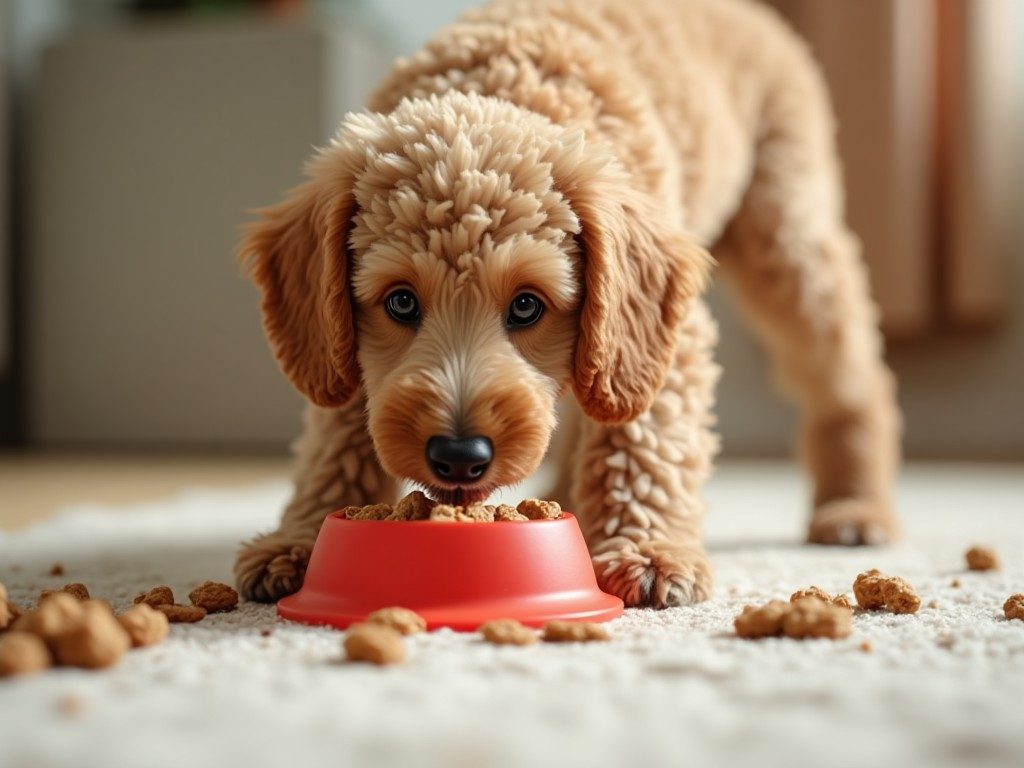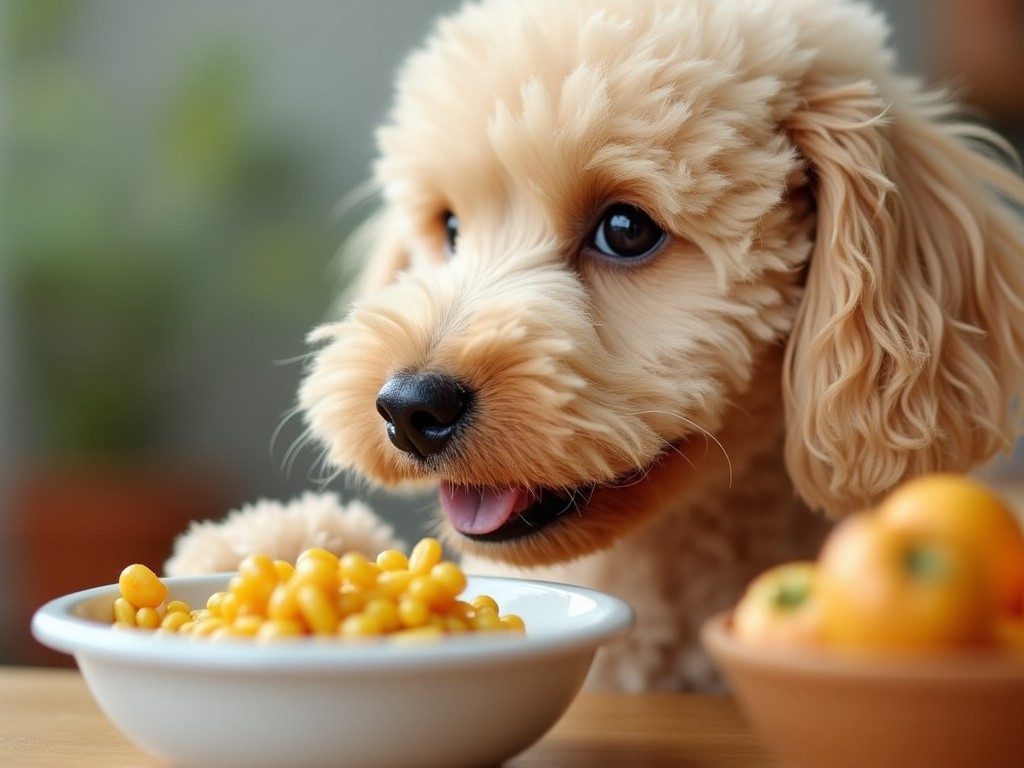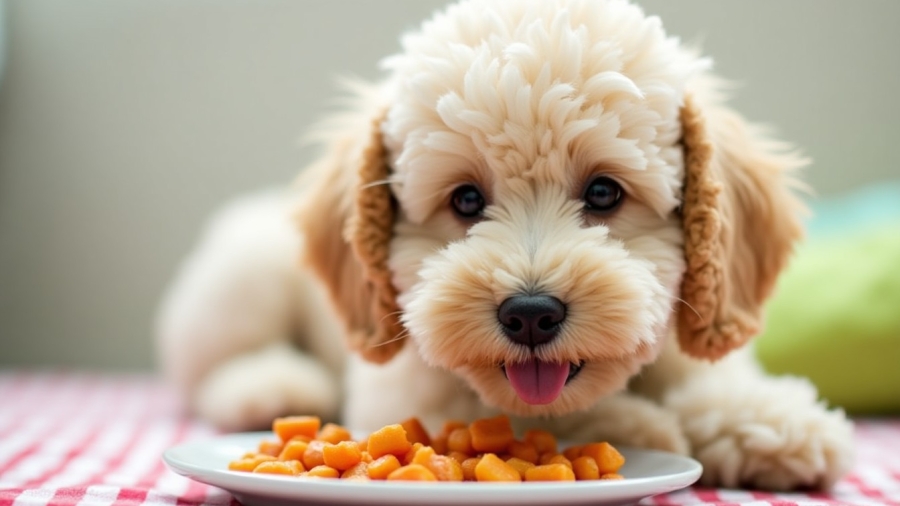Struggling to get your poodle to eat? You’re not alone.
Many poodle owners face this challenge. A picky eater can be stressful. It’s important for your poodle to get proper nutrition. This blog will share seven creative and tempting mealtime tips. These tips will help you make mealtime fun and nutritious for your furry friend.
Say goodbye to mealtime battles and hello to a happy, well-fed poodle. Whether you’re dealing with a fussy eater or just want to try something new, these tips will make a difference. Let’s dive into these helpful strategies to improve your poodle’s eating habits.
Understanding Your Poodle’s Eating Habits
Every poodle has unique eating habits. To help your poodle eat well, it is important to understand these habits. This knowledge can guide you in finding solutions that work best. Let’s explore common reasons for picky eating and how to identify specific needs.
Common Reasons For Picky Eating
Poodles may refuse food for various reasons. Here are some common causes:
- Health Issues: Dental problems or digestive issues can make eating painful.
- Food Preferences: Poodles may dislike certain textures or flavors.
- Stress: Changes in the environment or routine can cause anxiety, affecting appetite.
- Feeding Schedule: Irregular feeding times can disrupt eating habits.
Understanding these reasons can help you address your poodle’s picky eating behavior more effectively.
Identifying Specific Needs
Each poodle has specific needs that influence their eating habits. To identify these needs, observe your poodle closely.
| Behavior | Possible Need |
|---|---|
| Refuses dry food but eats wet food | Prefers softer textures |
| Eats only when you are present | Seeks comfort and security |
| Shows interest in new foods | Enjoys variety |
By recognizing these patterns, you can tailor mealtime to better suit your poodle’s needs. This personalized approach can make mealtime more enjoyable and ensure your poodle gets the nutrition it needs.

Creating A Comfortable Eating Environment
Creating a comfortable eating environment can make a big difference in your poodle’s mealtime experience. Dogs are sensitive to their surroundings, and a calm, pleasant space can encourage better eating habits. Here are some tips to help you create the perfect mealtime setting for your poodle.
Choosing The Right Feeding Area
The feeding area should be quiet and free from distractions. Loud noises and constant activity can make your poodle anxious. Find a corner in your home that is away from the hustle and bustle. This can be a separate room or a quiet corner of the kitchen.
Make sure the feeding area has enough space for your poodle to move comfortably. Avoid placing the bowl in narrow spaces where your dog might feel confined. A wide-open space gives your poodle the freedom to eat without feeling trapped.
Maintaining A Consistent Schedule
Dogs thrive on routine. Feeding your poodle at the same times each day can help regulate their appetite. Consistency helps your dog know what to expect and reduces anxiety around mealtime.
Set specific times for breakfast, lunch, and dinner. Stick to these times as closely as possible. If you feed your poodle twice a day, choose times that work best for your schedule and stick to them.
Here’s a simple feeding schedule you can follow:
| Meal | Time |
|---|---|
| Breakfast | 8:00 AM |
| Dinner | 6:00 PM |
By creating a comfortable eating environment and maintaining a consistent schedule, you can help your poodle develop healthy eating habits. Remember, patience and persistence are key to making mealtime a positive experience for your furry friend.
Experimenting With Different Food Textures
Getting your poodle to eat can be a challenge. One effective strategy is to experiment with different food textures. By offering a variety of textures, you can find what your poodle prefers and make mealtime more enjoyable.
Wet Vs. Dry Food
Experiment with wet food and dry food to see which your poodle likes more. Wet food often has a stronger aroma, which can be more enticing for some dogs. Dry food, on the other hand, can help keep their teeth clean.
Consider offering a mix of both to provide a balanced diet. A simple table to compare the two options might look like this:
| Type | Benefits | Drawbacks |
|---|---|---|
| Wet Food | More flavorful, higher moisture content | Can be more expensive, shorter shelf life |
| Dry Food | Convenient, helps with dental health | Less moisture, might be less appealing |
Incorporating Soft And Crunchy Options
Introduce a mix of soft and crunchy foods to your poodle’s diet. Soft foods can be easier to chew, especially for older dogs or those with dental issues. Crunchy foods can provide a satisfying texture that some dogs enjoy.
Here are some examples:
- Soft options: Canned food, cooked vegetables, scrambled eggs
- Crunchy options: Kibble, dog biscuits, raw carrots
By experimenting with different food textures, you can find what makes your poodle’s mealtime more enjoyable. Remember to monitor their reactions and adjust accordingly.
Incorporating High-value Treats
Incorporating high-value treats into your poodle’s meals can make a huge difference. These treats are more appealing and can entice even the pickiest eaters. By using these treats strategically, you can encourage your poodle to eat more consistently and enjoy mealtime.
Types Of High-value Treats
High-value treats are usually more delicious and flavorful than regular dog food. Here are some types you can try:
- Meat-based treats: Cooked chicken, turkey, or beef can be very tempting.
- Cheese: Small pieces of cheese can be irresistible for many dogs.
- Commercial high-value treats: These are specially designed to be tasty and nutritious.
- Fruit and vegetables: Carrot sticks, apple slices, or blueberries can work well.
Using Treats To Encourage Eating
Incorporating these high-value treats can be done in several ways:
- Mixing treats with regular food: Add small pieces of high-value treats to your poodle’s usual food. This makes the meal more exciting.
- Using treats as a topper: Sprinkle shredded cheese or small meat pieces on top of the food.
- Hand-feeding treats: Offer a few high-value treats by hand to stimulate your poodle’s appetite.
- Training and rewarding: Use the treats as rewards for eating a portion of their meal.
By using these strategies, you can make mealtime more enjoyable for your poodle. This encourages better eating habits and ensures your pet gets the nutrition it needs.
Making Mealtime Interactive
Are you struggling to make your poodle eat? Making mealtime interactive can transform this challenge into a fun activity. Interactive meals keep your poodle engaged and stimulate their mind. Let’s explore some creative ways to achieve this.
Using Puzzle Feeders
Puzzle feeders are excellent for making meals interesting. These feeders require your poodle to solve a puzzle to access their food. This not only makes eating fun but also promotes mental stimulation.
- Slow Feed Bowls: These bowls have ridges and obstacles. They make your poodle work for their food.
- Interactive Toys: Toys like Kongs can be filled with food. Your poodle has to figure out how to get the food out.
Puzzle feeders come in various shapes and sizes. Choose one that suits your poodle’s size and skill level.
Engaging In Mealtime Games
Turning mealtime into a game can be very effective. It makes eating enjoyable and provides exercise. Here are some ideas:
- Hide and Seek: Hide small portions of food around the house. Let your poodle find them.
- Food Dispensers: Use treat-dispensing toys. Your poodle has to play with the toy to get the food.
These games make your poodle work for their food. They also help in burning off extra energy.
Making mealtime interactive can change your poodle’s eating habits. Try these methods to see what works best for your furry friend.

Adding Flavor Enhancers
Adding flavor enhancers can make your poodle’s meals more appealing. These simple tips can help transform bland food into a gourmet feast.
Using Broths And Gravies
Broths and gravies can make your poodle’s food more palatable. Use low-sodium chicken or beef broth. Pour a small amount over their kibble.
Another option is to use homemade gravies. Cook some meat with water and blend it into a gravy. Avoid using onions or garlic as they are harmful to dogs.
Incorporating Fresh Ingredients
Fresh ingredients can boost the flavor of your poodle’s meals. Add small pieces of cooked chicken or beef. You can also mix in some cooked vegetables like carrots or peas.
Another idea is to include fresh fruits. Small pieces of apple or banana can be a nice addition. Just make sure to remove any seeds or pits.
| Fresh Ingredients | Benefits |
|---|---|
| Chicken | High in protein |
| Carrots | Rich in vitamins |
| Apple | Provides fiber |
Using these flavor enhancers can make mealtime more exciting for your poodle. Experiment with different combinations to find what your dog loves the most.
Monitoring Health And Wellness
Ensuring your poodle’s health and wellness is crucial for their appetite. Monitoring their health can reveal hidden issues affecting their eating habits. Below, you will find essential tips for maintaining your poodle’s well-being.
Regular Vet Check-ups
Schedule regular vet visits to keep track of your poodle’s health. Vets can identify early signs of health problems. They can also offer tailored advice for your dog’s diet.
- Yearly examinations are essential.
- Check for weight changes.
- Ensure vaccinations are up to date.
Identifying Underlying Health Issues
Identify underlying health issues that might affect your poodle’s appetite. Common health problems include dental issues, gastrointestinal problems, or food allergies.
| Health Issue | Symptoms |
|---|---|
| Dental Issues | Bad breath, drooling, or trouble chewing |
| Gastrointestinal Problems | Vomiting, diarrhea, or constipation |
| Food Allergies | Itching, rashes, or ear infections |
If you notice any of these symptoms, consult your vet immediately. Early detection can prevent more serious health problems.
Staying Patient And Consistent
Maintaining patience and consistency is key when encouraging your poodle to eat. Dogs are creatures of habit, and poodles are no different. Over time, they can develop picky eating habits if not guided properly. By staying calm and dedicated, you can make mealtime a positive experience.
Building A Routine
Consistency starts with a routine. Feed your poodle at the same times each day. Dogs thrive on regular schedules, and knowing when to expect food can make them more willing to eat. A sample routine might look like this:
| Time | Activity |
|---|---|
| 7:00 AM | Morning Meal |
| 1:00 PM | Afternoon Meal |
| 6:00 PM | Evening Meal |
Create a calm environment during feeding times. Avoid distractions like loud noises or other pets. This helps your poodle focus on eating. Over time, your poodle will learn that these are times to eat.
Avoiding Common Pitfalls
Avoid feeding table scraps. This can lead to picky eating habits. Your poodle might start expecting tastier human food over their dog food.
Don’t give in to begging. Stay firm with the feeding schedule. If your poodle skips a meal, don’t worry. They will eat when they are hungry enough.
Change food gradually. If you need to switch their food, do it slowly. Mix a small amount of the new food with the old one, increasing the new food gradually over a week.
Avoid overfeeding treats. Too many treats can spoil their appetite for regular meals. Use treats sparingly and make sure they are healthy.
By focusing on these tips, you can help your poodle develop healthy eating habits. Patience and consistency will pay off in the long run.

Frequently Asked Questions
Why Won’t My Poodle Eat?
Poodles may refuse food due to stress, illness, or a change in diet. Always consult a vet first.
How Can I Make Mealtime Fun For My Poodle?
Use puzzle feeders or interactive toys. These can make mealtime more engaging and enjoyable for your poodle.
What Foods Are Safe For Poodles?
Poodles can eat lean meats, certain fruits, and vegetables. Always avoid toxic foods like chocolate, grapes, and onions.
How Often Should I Feed My Poodle?
Adult poodles typically eat twice a day. Puppies may need three to four smaller meals daily.
Conclusion
Feeding your poodle can be a challenge. These tips can help. Keep meals interesting with variety. Try different textures and flavors. Make mealtime a fun experience. Create a quiet eating space. Consistency is key. Patience and observation pay off. Your poodle’s health matters.
Enjoy the journey of finding what works best. Happy feeding!

